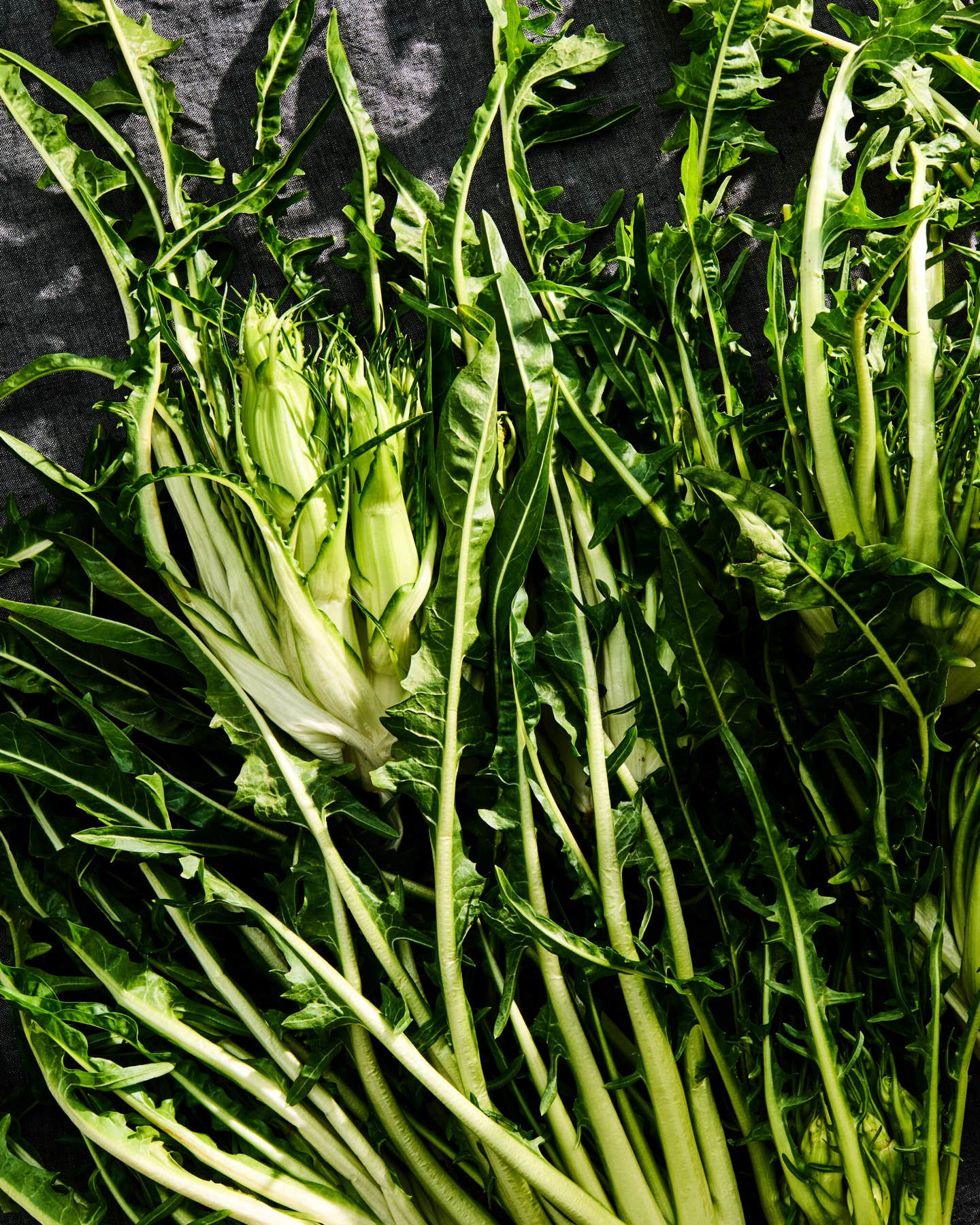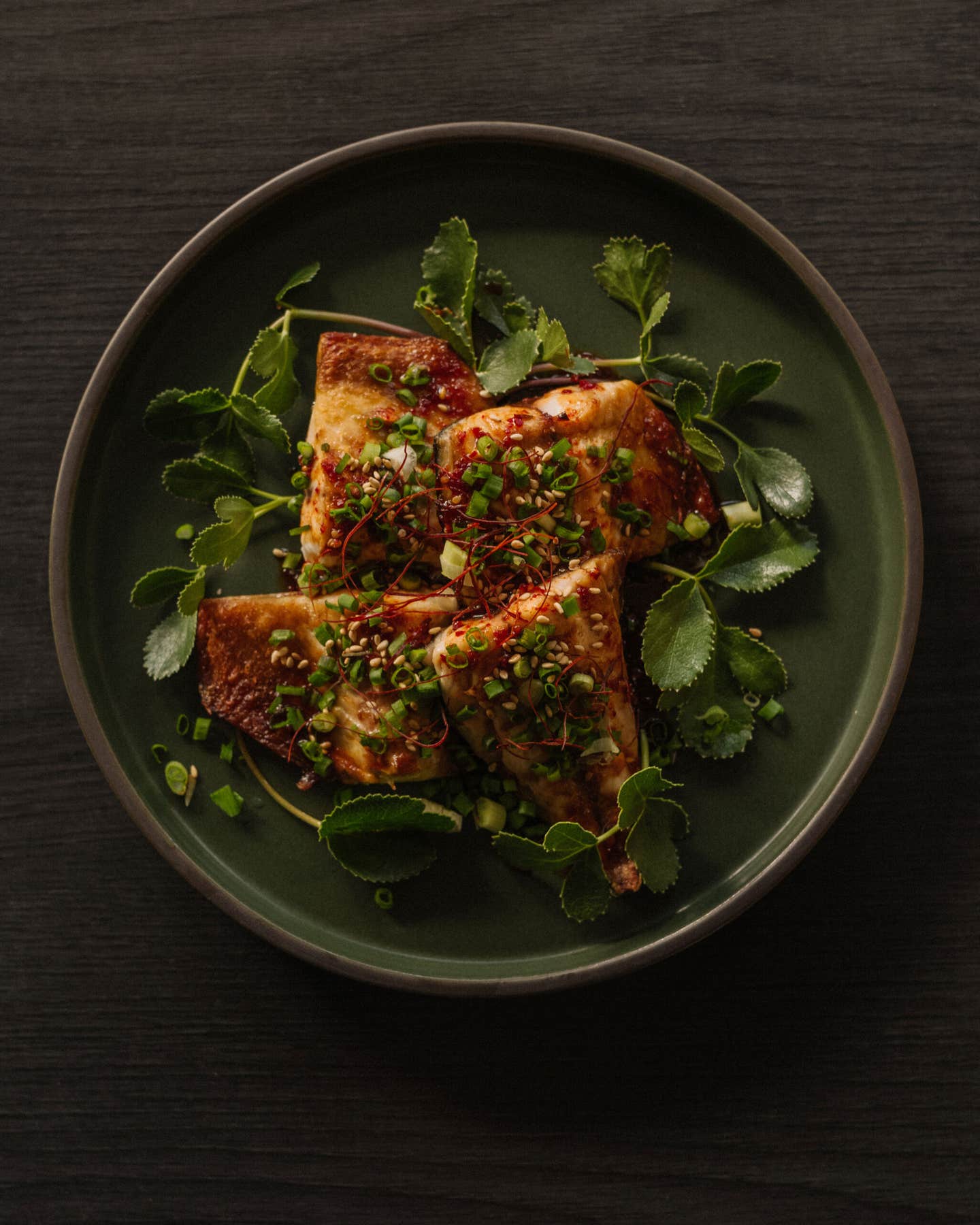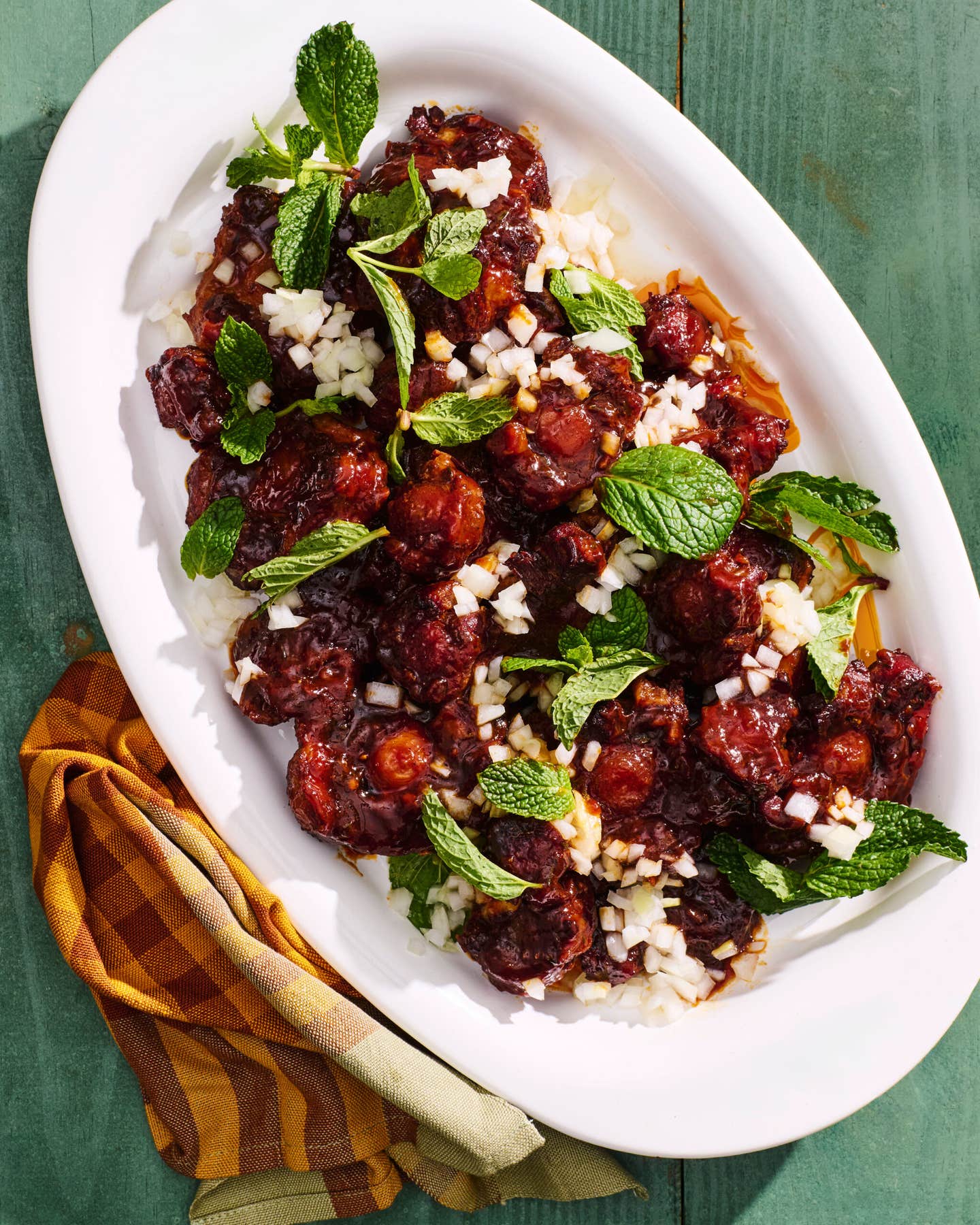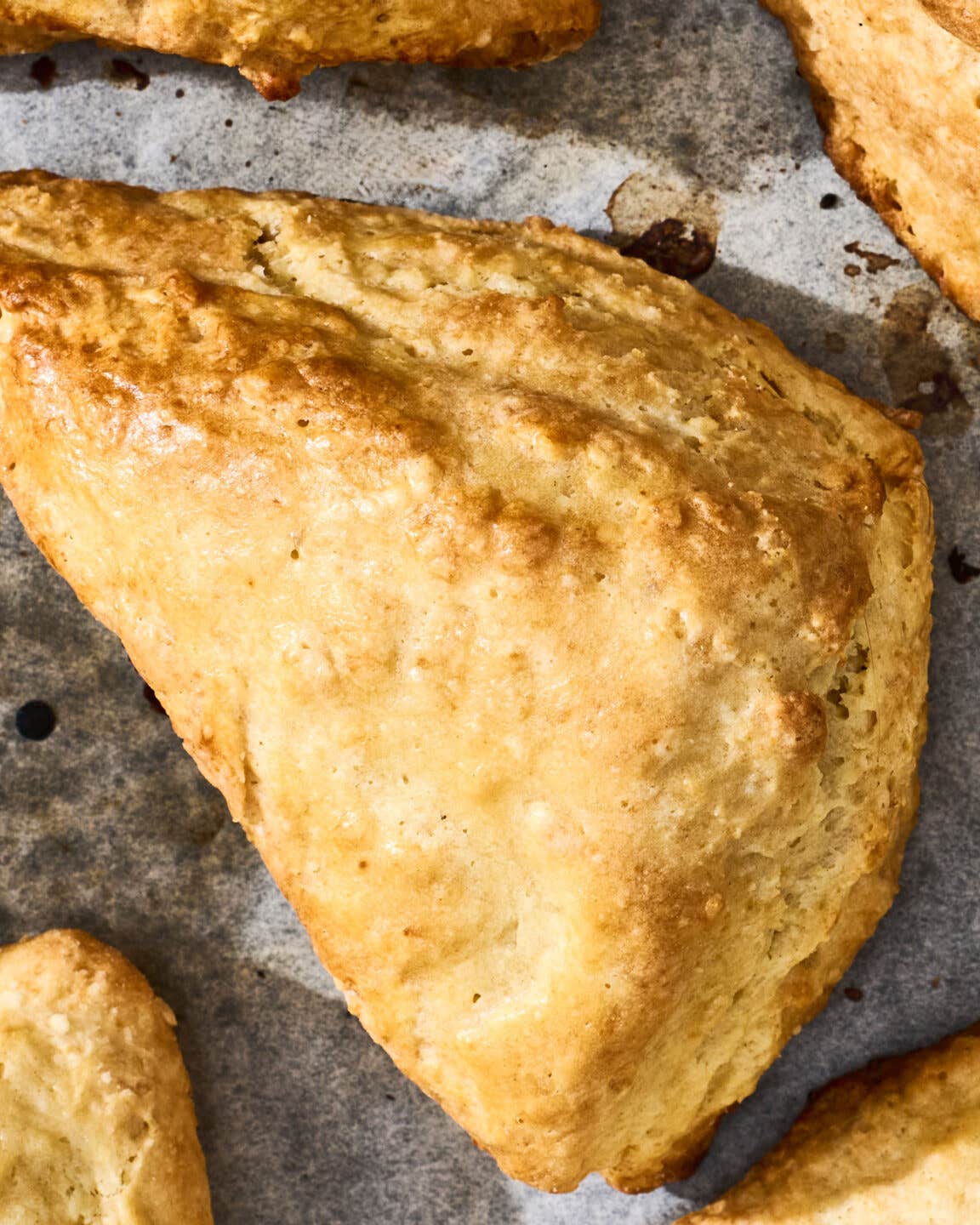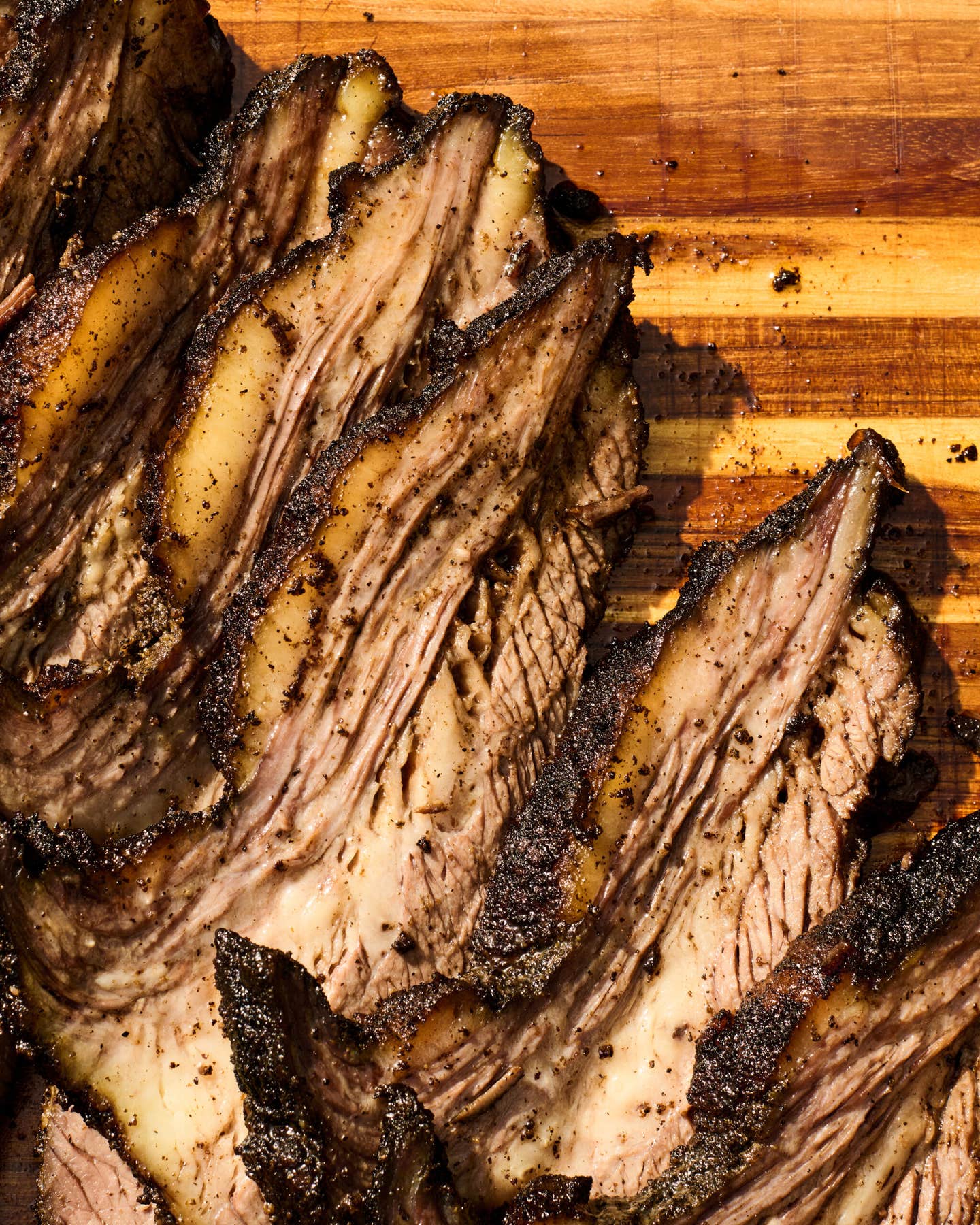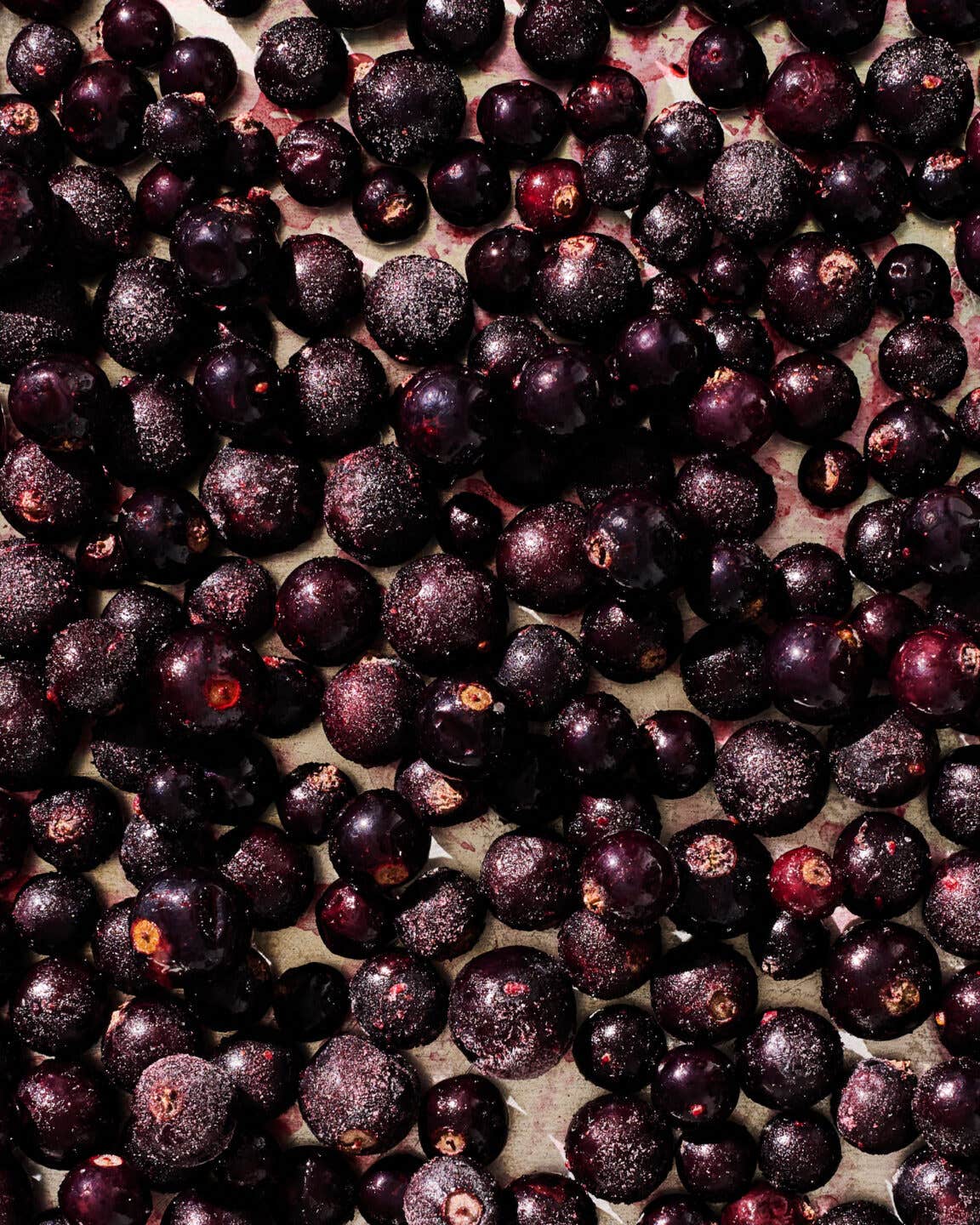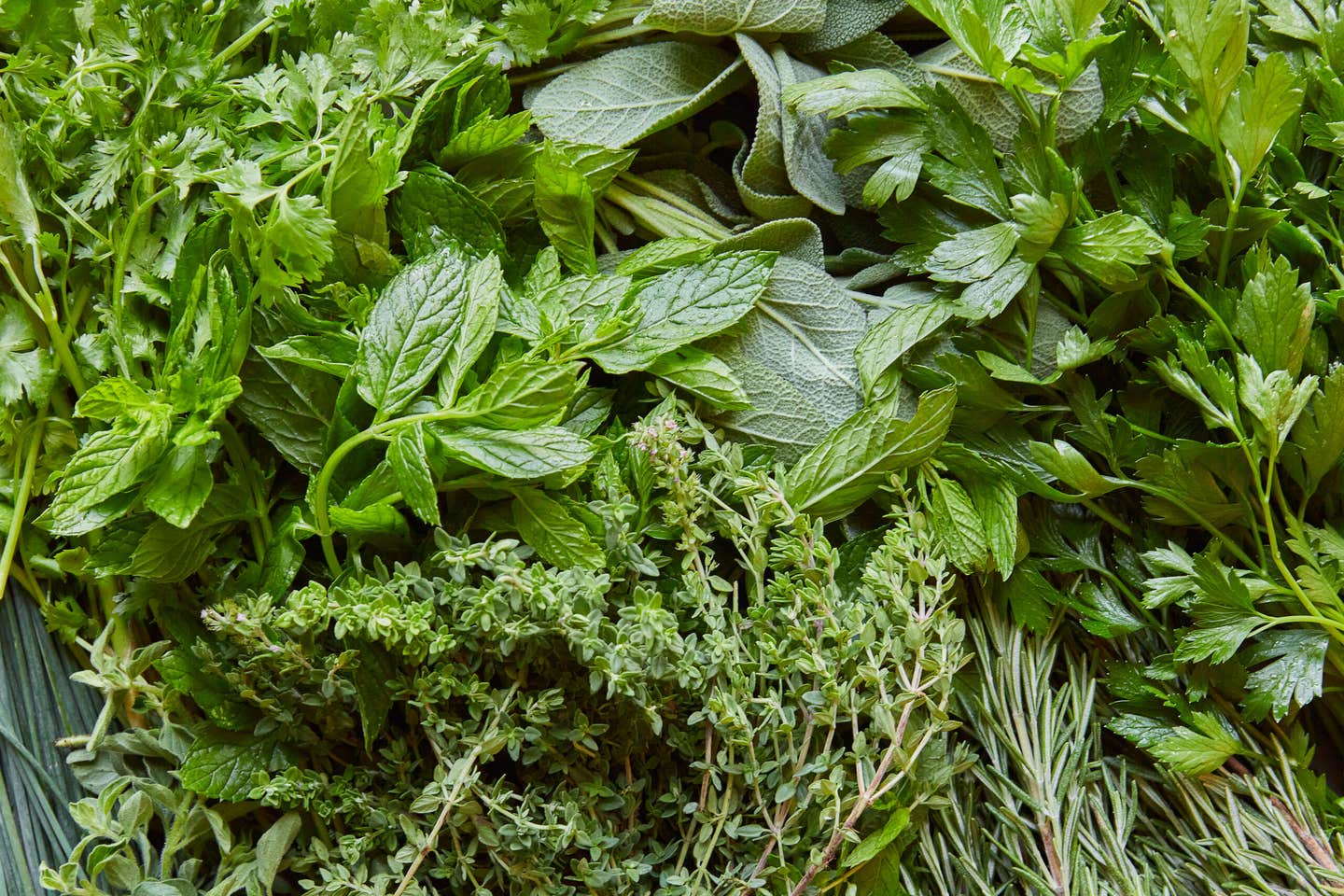
How to Use Up Fresh Herbs Before They Go Bad
Put every last leaf to use in pesto, compound butter, flavor cubes, and more.
Most of us have faced an herb surplus. Maybe you were overzealous at the farmers market, or perhaps you were blessed with a bumper crop of basil. And who among us hasn’t wondered what to do with all that parsley when the recipe called for a sprig? Whatever your predicament, here’s a bunch (ha!) of ideas to save your herbs from the compost bin.
Zhuzh Up Your Butter
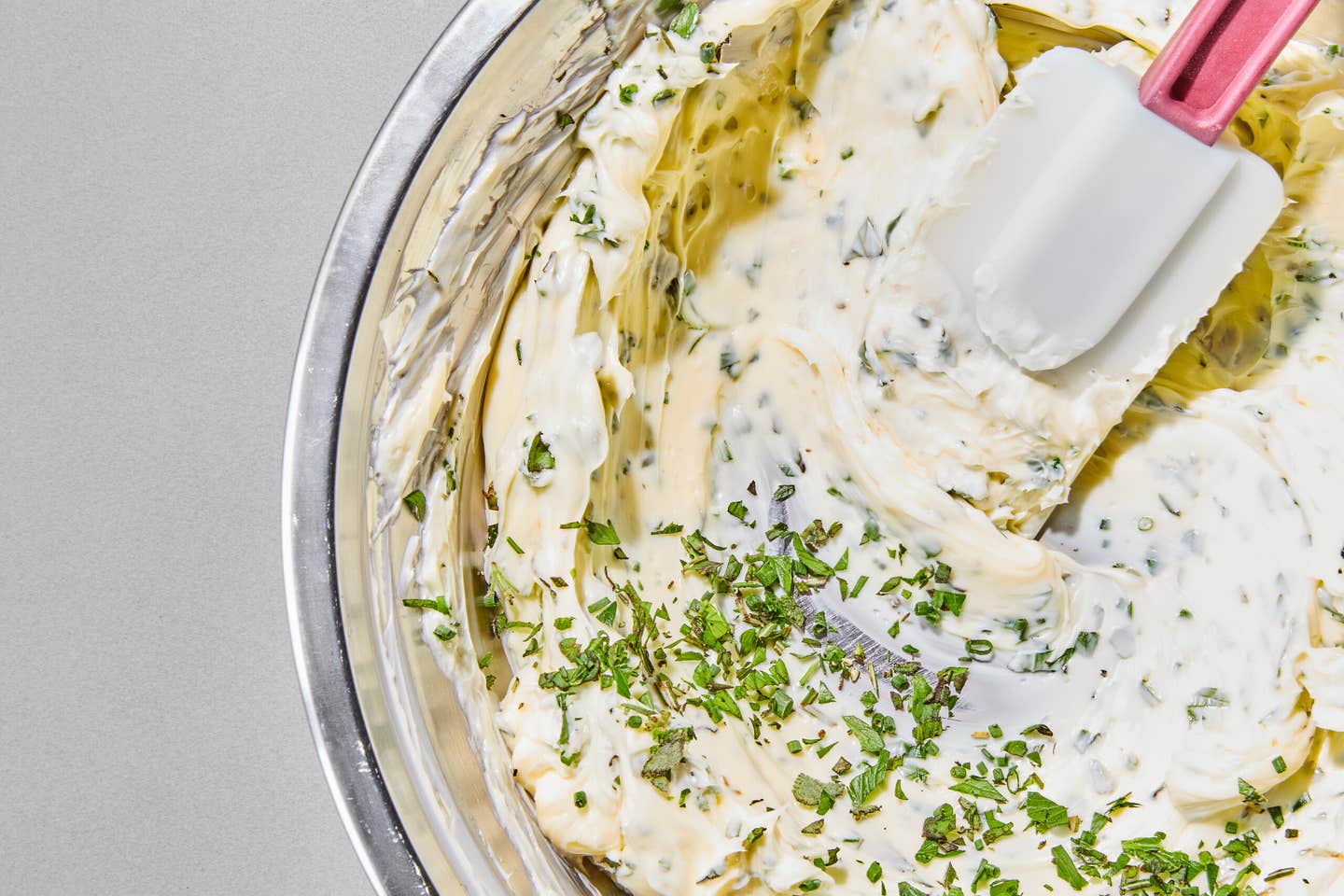
Mix finely chopped herbs into softened butter with a pinch of salt (and some citrus zest if you’re feeling it). Scrape it onto a sheet of plastic wrap, then squeeze it into a log, twisting the ends to close. Refrigerate it until solid, and voilà! Think of it as you would regular butter, so slather it on toast, rub it on chicken before roasting, or even use it to bake aromatic cakes. You can slice thick discs for fancy dinners, or even use a crinkle cutter, if you have one, to make wavy slices.
Freeze Into “Flavor Cubes”
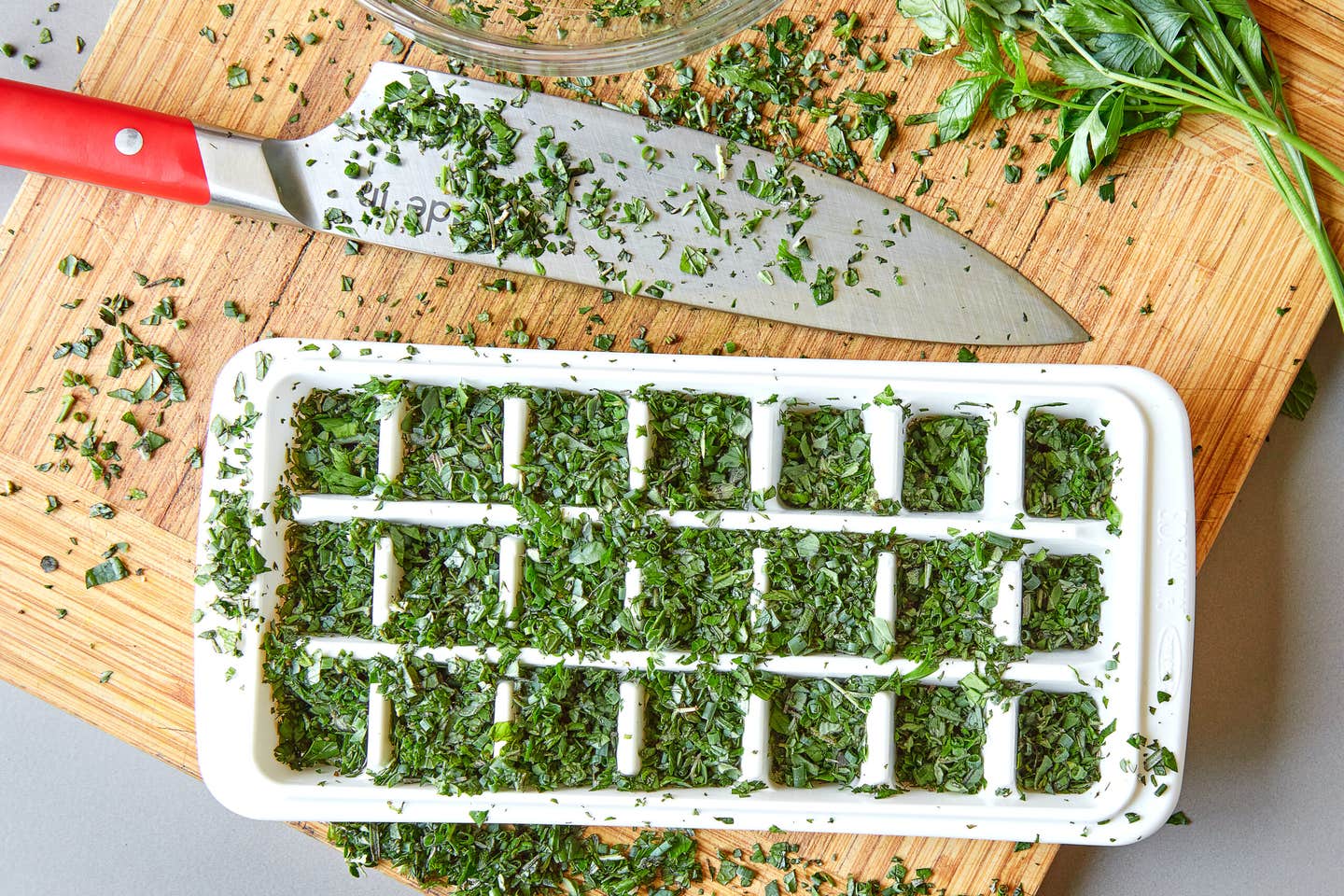
Flavor cubes (frozen fresh herbs) are money in the bank when it comes to one-pan meals—simply toss them into a skillet as you saute veggies, cook eggs, or make sauce for pasta. Thawed, they’re a terrific salad dressing starter or flavor booster for cooked grains. To make flavor cubes, chop your herbs and fill the holes of an ice cube tray (I like these) about three quarters of the way full (a silicone mold works best here). Drizzle over just enough olive oil to submerge the herbs, and freeze until solid, at least four hours. Once frozen, transfer them to freezer bags, where they’ll keep for up to six months.
Hang Them Out to Dry
This old-school method feels a little medieval, but if you live in a dry climate, it’s a tried-and-true way to keep herbs from spoiling. Working with small bunches, tie the stems of the herbs using kitchen twine. Hang them upside down, away from direct sunlight, and in four to seven days, they should crumble easily—that’s how you know they’re ready to use. Larger-leaf herbs like basil take longer to dry, about two to three weeks. Use dried herbs to make spice blends or rubs that double as fantastic gifts.
Make Flavored Salt and Sugar
Now that you have dried herbs in the pantry, use them to infuse salt or sugar to extend their shelf life even further. Crumble the dried leaves into a food processor with granulated sugar or kosher salt. (I like a ratio of ½ cup herbs to 1 cup salt or sugar.) Pulse until thoroughly blended, then add more salt or sugar if you’d like, and pulse again. Herb salt will keep in an airtight container for up to six months, so let your imagination run wild. A pound cake made with basil sugar: Why not? Mint sugar brûléed on some grapefruit: That’s self-care. The possibilities are endless.
Get Baked
Certain herbs have a floral or citrusy aroma, meaning they make wonderful—and natural—flavor enhancers in a variety of desserts. Rosemary plays well with chocolate and citrus, while thyme and tarragon nicely complement stone fruit such as peaches, plums, and nectarines. Basil and mint pair well with berries, and sage and apples are a match made in heaven. Add these herbs to your dough or batter the next time you bake starting with a tablespoon or two.
Herbify Your Salad
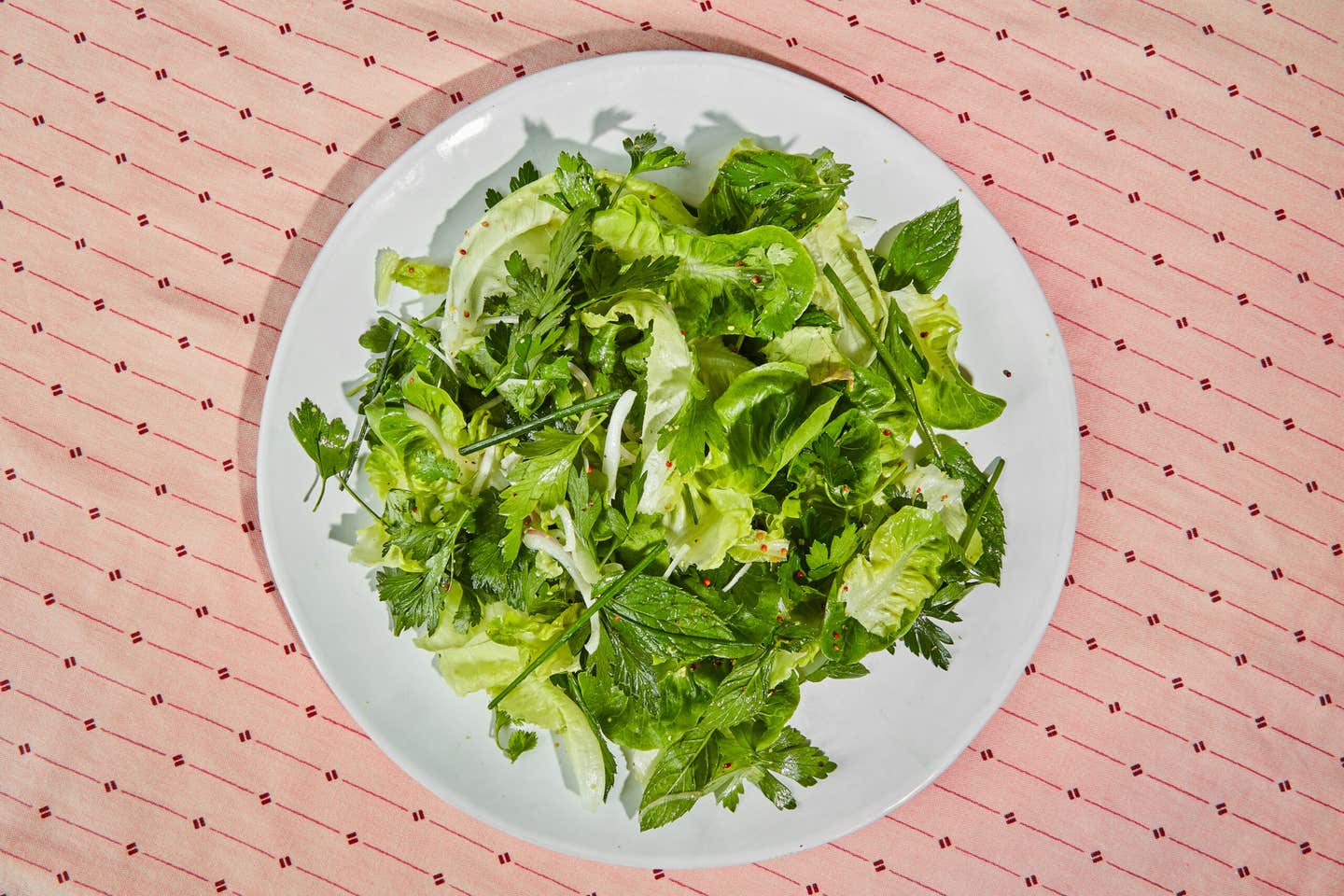
Add new dimensions to green salads by tossing in handfuls of tender-stem herbs like mint, parsley, cilantro, dill, or chervil. For once, forget chopping or tearing the leaves! Herb salads make gorgeous, textural toppings for pizza, frittatas, and sandwiches.
Make (Anything But) Simple Syrup
Muddling is messy. Gussy up your libations instead with an herby syrup. Add a handful of washed herbs (stems too!) to a pot with equal amounts of sugar and water. Bring the liquid to a boil, give it a few stirs, then remove it from the heat and cover to steep. As soon as the syrup has cooled, you can strain and discard the herbs, leaving you with a magic potion that you can use in cocktails, tea, or iced coffee. Better yet, next time you bake a cake, while it’s still warm, drizzle or brush on some herby syrup to add another layer of flavor. Bonus: This technique keeps the cake moist.
Rethink Your Pesto Strategy
Drowning in basil? Make pesto! To experienced cooks, this is a no-brainer, but many forget that the pesto matrix is vast. There’s no need to limit yourself to one herb (or nut, for that matter). Use your favorite pesto recipe as a framework, and swap in whatever herbs you have lying around. Minty pesto is the perfect complement to grilled lamb and roasted carrots; tarragon pesto swirled into Greek yogurt is a great base for chicken salad. I’m fond of chunky parsley-walnut pesto, which makes a quick and zesty sauce for spaghetti. Lastly, don’t forget about chives, which can be blitzed into a sauce that’s delicious on roasted potatoes.
Go Cuckoo for Kuku
Kuku sabzi is a Persian frittata that calls for so much cilantro, parsley, and dill that it’s green through and through. Leeks, aromatic spices, and barberries add even more complexity.
Learn to Salsa (Verde)
This all-purpose relish elevates roasted vegetables, grilled meats, potatoes—you name it. To make salsa verde, pulse together 2 cups of mixed herbs (like basil, parsley, and mint), a garlic clove, a splash of red wine vinegar, a tablespoon of capers, and a few anchovy fillets in the food processor until coarsely chopped. Transfer to a small bowl and stir in ½ cup of extra-virgin olive oil, season with salt, y ya está.
Store Herbs for the Long Haul
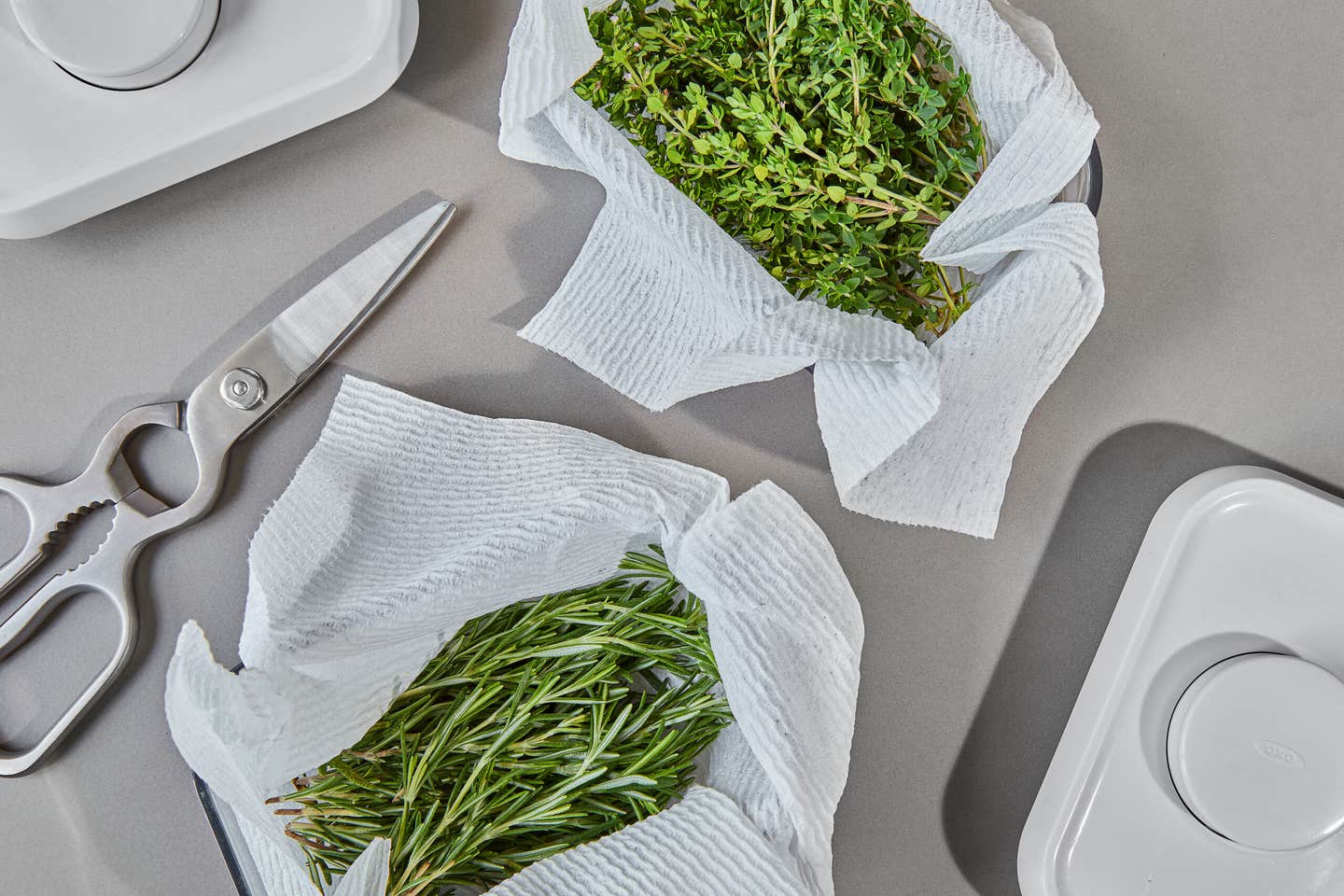
Storing herbs properly is essential. Start by removing any brown or softened leaves, then wash the herbs in cool water to remove any grit. A towel or salad spinner comes in handy to remove moisture. Hardy herbs (rosemary, thyme, oregano, marjoram, sage, what have you), keep best wrapped in a damp paper towel inside a zip-top bag. Tender herbs (parsley, cilantro, tarragon, mint, dill, basil, etc.) are best stored like a bouquet of flowers: stems trimmed and plunged into a glass of water. Cover the bundle loosely with an overturned plastic bag. Most herbs should be stored in the fridge, but basil can be left on the countertop. Change the water every few days as needed. Some herbs will stay fresh this way for up to three weeks. Product mention: OXO Greens Saver
Final Thoughts
If you cook at home, leftover herbs are inevitable, but these tricks will help you battle the bounty and reduce waste. The most important step is proper storage, which can extend shelf life from a couple of days to a couple of weeks—plenty of time to try your hand at the recipes in this list.
Keep Reading
Continue to Next Story
